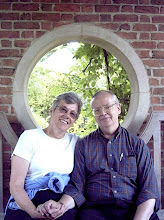The Emperor then asked who was the man who had spoken in this manner, and Boddhidharma, loyal to his nihilism, replied:
“Nor do I know who I am.”
These words resonated for a long time in Chinese memory. Written in the middle of the eighteenth century, the novel The Dream of the Red Chamber has the curious passage:
“He had been dreaming and then he woke up. He found himself in the ruins of a temple. On one side there was a beggar dressed in the robe of a Taoist monk. He was lame and killing fleas. Hsing-Lien asked him who he was and what place they were in. The monk answered:
'I don’t know who I am, nor where we are. I only know that the road is long.’
Hsing-Lien understood. He cut off his hair with his sword and followed the stranger.”
In the stories I have mentioned, the ascetic and the king symbolize nothing and plenitude, zero and infinity. More extreme symbols of that contrast would be a god and a dead man, and their fusion would be more economical: a god that dies. Adonis wounded by the boar of the moon goddess, Osiris thrown by Set into the waters of the Nile, Tammuz carried off to the land from which he cannot return, are all famous examples of this fusion….
— Jorge Luis Borges, “The Dialogues of Ascetic and King,” 1953, in Selected Non-Fictions, Weinberger (ed.), pp 384-385.
Emanuel Swedenborg
Taller than the rest, the distant
Man would walk among men, faintly
Calling out to angels, speaking
Their secret names. What earthly eyes
Cannot see he saw: the burning
Geometries, the crystalline
Labyrinth of God, the sordid
Whirling of infernal delights.
He knew that Glory and Hades
And all their myths are in your soul;
He knew, like the Greeks, that each day’s
The mirror of Eternity.
In flat Latin he catalogued
Whenless whyless ultimate things.
— Jorge Luis Borges, “Prologues,” 1975, in Ibid., p. 457.

No comments:
Post a Comment